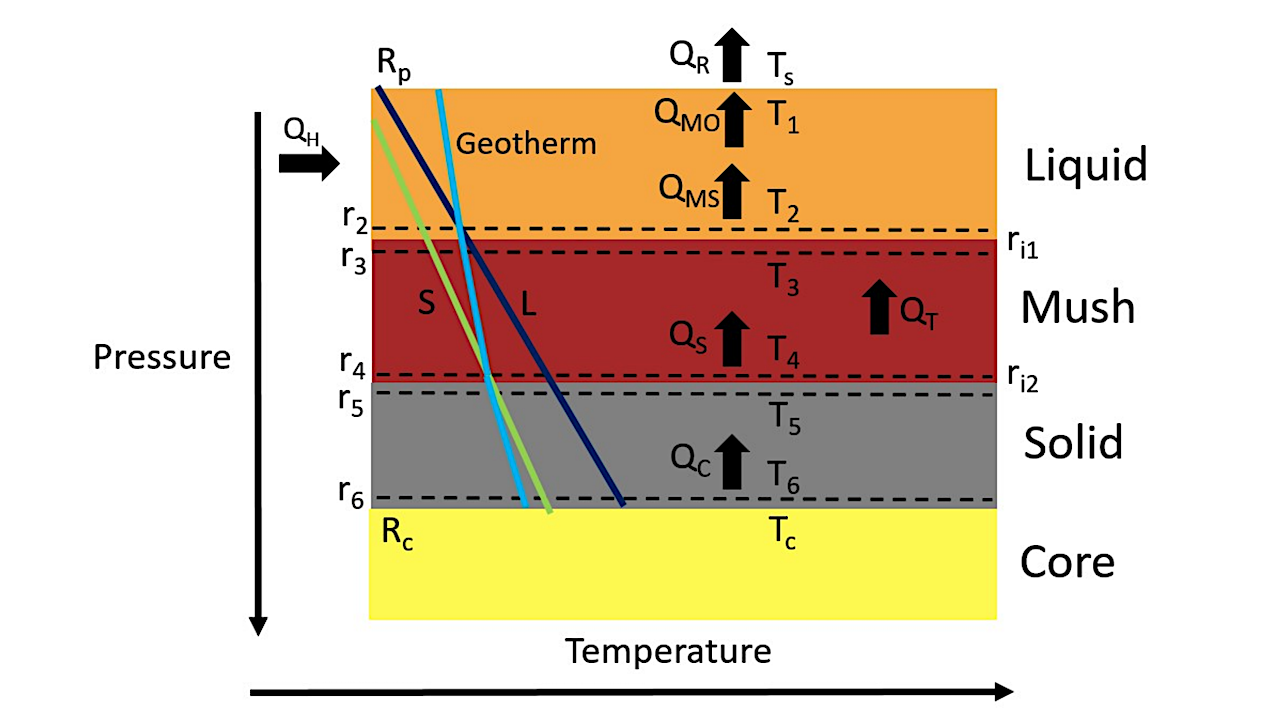Thermal Evolution Of Lava Planets

Rocky planets are thought to form with a magma ocean that quickly solidifies. The horizontal and vertical extent of this magma ocean depends on the interior thermal evolution of the planet, and possibly exogenous processes such as planet migration.
We present a model for simulating the thermal history of tidally locked lava planets. We initiate the model with a completely molten mantle and evolve it for ten billion years. We adopt a fixed surface temperature of 3000 K for the irradiated day-side, but allow the night-side temperature to evolve along with the underlying layers. We simulate planets of radius 1.0R⊕ and 1.5R⊕ with different core mass fractions, although the latter does not significantly impact the thermal evolution.
We confirm that the day-side magma ocean on these planets has a depth that depends on the planetary radius. The night-side, on the other hand, begins crystallizing within a few thousand years and completely solidifies within 800 million years in the absence of substantial tidal heating or day-night heat transport.
We show that a magma ocean can be sustained on the night-side of a lava planet if at least 20 per cent of absorbed stellar power is transmitted from the day-side to the night-side via magma currents. Such day-night transport could be sustained if the magma has a viscosity of 10−3 Pas, which is plausible at these temperatures.
Alternatively, the night-side could remain molten if the mush layer is tidally heated at the rate of 8×10−4 W/kg of mush, which is plausible for orbital eccentricities of e>7×10−3. Night-side cooling is a runaway process, however: the magma becomes more viscous and the mush solidifies, reducing both day-night heat transport and tidal heating. Measurements of the night-sides of lava planets are therefore a sensitive probe of the thermal history of these planets.
Mahesh Herath, Charles-Édouard Boukaré, Nicolas B. Cowan
Subjects: Earth and Planetary Astrophysics (astro-ph.EP)
Cite as: arXiv:2409.11459 [astro-ph.EP] (or arXiv:2409.11459v1 [astro-ph.EP] for this version)
https://doi.org/10.48550/arXiv.2409.11459
Focus to learn more
Submission history
From: Mahesh Herath
[v1] Tue, 17 Sep 2024 18:00:00 UTC (2,528 KB)
https://arxiv.org/abs/2409.11459
Astrobiology, Astrogeology,








